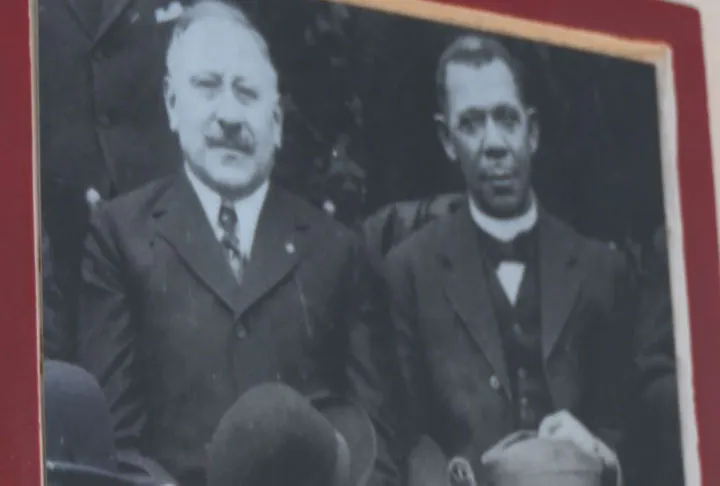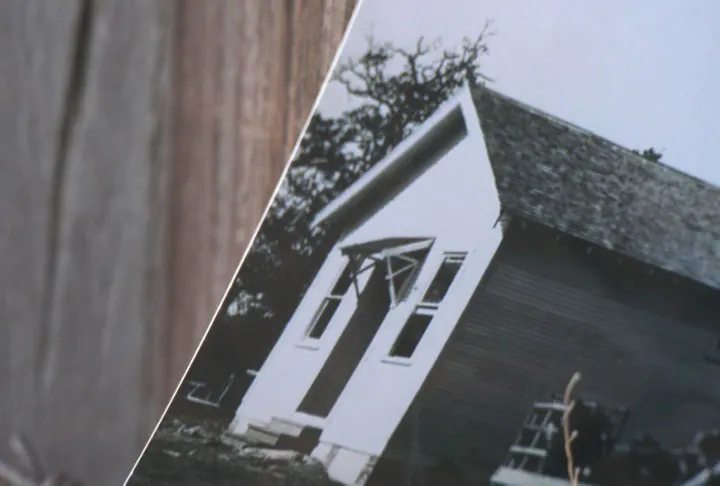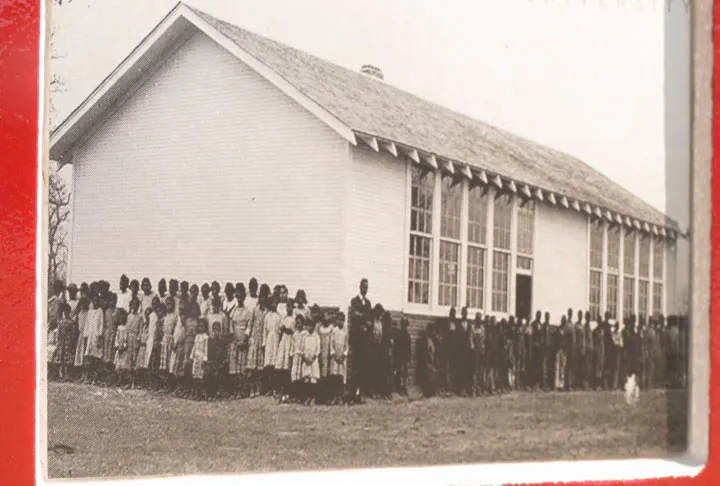The History Made Her Stay
Amanda Bradford moved back to her hometown of Boley, Oklahoma, and as she learned about the area’s rich history of the Rosenwald Schools, her passion for preservation grew.Thursday, December 21st 2023, 8:12 pm
BOLEY, Okla. -
Amanda Bradford grew up in Boley, Oklahoma knowing her father and her grandparents went to a Rosenwald School. She even knew where the remains of the schools were, but she never knew their significance or why the schools came to be until she moved back home as an adult.
“I fell in love with my hometown all over again,” she said while driving down rural roads to bring her daughter to school. “I started learning history that I didn’t even know about my own community.”
The single mom thought she would move back home for a few years to get help from her family after she had her third kid. But it has been almost five years since Bradford left Oklahoma City, and her plans have changed.
“It’s the history that made me want to stay,” said Bradford.
She got a job as the Boley Town Clerk and remembers taking a call from Jerry Klinger with The Jewish American Society for Historic Preservation.
Klinger started telling her about the relationship between Jewish Philanthropist Julius Rosenwald and the prominent educator Booker Tee Washington.
 Image Provided By: Oklahoma Historical Society
Image Provided By: Oklahoma Historical Society
“I was familiar with the Rosenwald schools, what I wasn’t familiar with was who Julius Rosenwald was, why he made the contributions,” said Bradford.
Washington, the President of Tuskegee University, told Rosenwald, a part-owner of Sears, Roebuck and Company, about the plight of Black education in the segregated South. In the early 1900s, their schools were severely underfunded compared to the white schools.
“In Oklahoma, it really starts in the 20’s, the 1920s, and they developed schools, they developed their own kind of building patterns that are specific to Rosenwald schools,” said Lynda Ozan, the Deputy State Historic Preservation Officer.
Ozan said the schools received money from the Rosenwald Fund, matching funding from people in the communities. There were more than 5,000 Rosenwald Schools across the south and 198 facilities in Oklahoma.
 Image Provided By: Oklahoma Historical Society
Image Provided By: Oklahoma Historical Society
“My background is in underrepresented communities,” said Ozan. “And so, in this program, you have two underrepresented communities. You have a Jewish man, who in Oklahoma that’s very uncommon, involved in building schools for African Americans, and so the two automatically piqued my curiosity as to where they were being built, why they were being built, who was funding them, how things were being accomplished.”
But uncovering all that information has been a difficult task. After nearly 10 years, the Oklahoma Historical Society is nearing the completion of the fieldwork to document every school in the state.
“We’re talking about buildings that are for underrepresented communities, so their history isn’t readily available,” said Ozan. “You don’t have tax records you can go to; they’re not plotted on maps. You just have names of schools, and so then you have to really become a detective.”
The Historical Society relies on people like Bradford, who grew up knowing the old rocks and ruins of a building were where their parents and grandparents graduated.
 Image Provided By: Oklahoma Historical Society
Image Provided By: Oklahoma Historical Society
“This is Clayton Chapel,” said Amanda, pointing to a barely noticeable rock wall next to a dirt road.
About a mile away are steps to more ruins that once was a Rosenwald School.
“Oh, look at the detail,” said Bradford, looking closely at a foundation.

The schools were purposefully placed within a mile or two of each other so kids could do their farm chores and then walk to school.
“In the white community, you could take your horse and buggy and get to the school,” said Ozan. “There, you’re traveling on foot, and so it needs to be close.”
Bradford graduated from Boley High School, which also received money from the Rosenwald Fund.
If she didn’t know about her own town’s history, she realized others likely didn’t either.
“As I learn, I want to teach more,” she said. “I’m so passionate about it people get tired of me talking about it, but I can’t get enough of talking about it.”
When Jerry Klinger called her, he hoped to spread that passion by installing a plaque in the town talking about the Rosenwald School history.
Bradford made the project happen, and now people driving into town can learn how, when no one else was helping, a Jewish man used his wealth to help educate a generation of Black Americans in the South.
 “It is important and imperative to preserve Oklahoma’s history,” said Ozan. “We need to know where they are; we need to know why they developed so that we can understand how we evolved as a state.”
“It is important and imperative to preserve Oklahoma’s history,” said Ozan. “We need to know where they are; we need to know why they developed so that we can understand how we evolved as a state.”
As long as Bradford stays in Boley, she’ll help to continue that mission.
“It’s not just preserving history,” said Bradford. “It’s also creating future.”
Katie Eastman
Katie is originally from Maine and landed in Oklahoma after working as a reporter around the country for more than a decade. She is in her element with a camera in hand, talking to people whose stories haven’t been told with the goal of helping us all understand each other a little better.
More Like This
December 21st, 2023
March 10th, 2025
March 10th, 2025
March 10th, 2025









